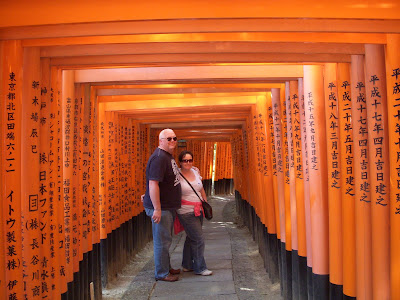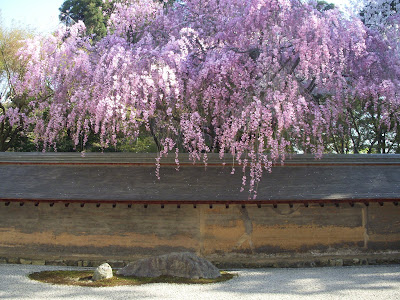Everyone that has commented on this site, sent me e-mail or spoken to me about in person likes one feature of Mummy boon above all the others.
Well never let it be said that I am above a little bit of pandering to my audience so here is more of what you people apparently like.
Kit-Kat Reviews
First up is a selection of mini Kit-Kats comprised of ordinary ones (and yes, I have forgotten what they taste like) and some rose flavoured entries. Just in time for, oh wait, Mother’s Day was a while ago wasn’t it?
Oh well I guess June is the time roses bloom in Japan so that must be the connection. Unless I’m making the mistake of trying to understand Japan again.
The packaging on the bag itself is brilliantly, wonderfully girly. Not only are there 3 pink roses and a pink rose petal motif there is also swirly writing and a faux decorative label trying to make it look like a hand made present.
It also features a really baffling note proclaiming it to be a “Kit Kat Limited Edition.”
I have been doing this for a while now and I can reliably inform you that all the Kit-Kats I review on this site are limited editions. And usually they are not only released for a limited time but they are only released in limited areas/stores to boot. So what on earth is so special about these rose ones? The mind boggles at what incredible treasure Kit-Kat must have produced here to warrant such a label.
The packaging on the individual Kat (I have decided from now on this is how we’re going to refer to the singular, okay!) doesn’t disappoint either. It is bright pink and has a rose motif. Frankly if it had been anything else I would have felt betrayed.
Sadly the chocolate itself is a normal colour and not pink in the slightest. Still that tends to bode well as far as the flavour is concerned; all of the better flavours have been in the standard colours.
So how does the flavour stack up?
Well, whilst it definitely tastes differently to a normal Kit-Kat sadly I can’t really detect flavour other than chocolate. The rose element is so slight that all it really serves to do is put a slightly different edge on the chocolate. Less blandly sweet and just a bit more complicated. It works and it does taste nice but the majority of the roses in the product seem to have wound up on the packaging rather than in the biscuit.

Next up we have some Lemon Vinegar.
Hold up, vinegar?
On a biscuit!
……for the first time ever I am having second thoughts about actually eating one of these. Chocolate and vinegar is not an obvious match and surely the lemon is only going to make it even more sour and confused.
Ah I get it. Apparently lemon vinegar is some kind of delicious refreshing soft drink, at least that’s what the packaging seems to suggest. Hold on let me Google that for a moment.
Most of the results appear to be home making websites advocating how you can use lemon vinegar as a substitute cleaning substance.
Well that is very reassuring. New Kit-Kat substitute bleach flavour! Yum, it’s poison-licious.
The packet doesn’t help either. It is white and yellow. Those are the colours of bottles of bleach!
Oh thank god it is a normal chocolate colour.
And it tastes really very lemony. In fact as chocolate goes this is easily the lemoniest I have ever had. And it isn’t an after taste or a suggestion it is a big lemon hit. In fact it may be a little bit too lemony actually. The taste does tend to linger somewhat. In fact quite a lot. Wow, maybe a bit less lemony next time Nestle.
I am very glad to report that it also tastes not in the slightest bit like vinegar. Or bleach.
Usually I question what the purpose of these really strongly flavoured Kit-Kats is but this time nestle has seen fit to give me some idea. See that little chef’s hat in the top right corner. That is promising that these Kit-Kats are perfect for use in cooking, specifically for spicing up a kind of yoghurty/pudding thing. There is more info at http://cookpad.com/kitkat for anyone who is interested.

Since the lemon vinegar ones were not so bad I was a bit more comfortable trying out some of the apple vinegar ones. Particularly when after a Google search I discovered that apple vinegar is really a kind of traditional cider. I like cider and more Kit-Kats flavoured after booze would suit me down to a tee.
The packet was nice and friendly too, particularly the individual wrapper which is in pleasingly retro colours that are also the colour of apples. Offset with lovely retro typography it was all very welcoming and wholesome. I was, dare I say it, excited to try my new Kit-Kat.
Oh hell the chocolate is cream coloured. That is never a good sign.
Before I even bit into it I was overpowered by apples. This thing smells really, really strongly of apples. In fact the scent is the strongest fruit scent of any Kit-Kat since the watermelon ones. I don’t have any watermelon Kit-Kats to hand right now but I suspect the apple vinegar Kit-Kats smell more strongly of apples than the watermelon Kit-Kats smell of watermelons.
….
Do you ever write something that causes you to consider what exactly it is that you’re doing with your life?
Anyway, how do they taste?
Bloody marvellous!
There is very little recognisably Kit-Kat here. It is less sweet than Nestlé’s usual offerings and the chocolate seems creamier and not quite as cheap. IT is also really, really powerfully appley. The lemon vinegar Kit-Kats have nothing on the apple vinegar for fruity taste. These things are kings of fruity tastes. The high lords of apple flavour.
Nestle have produced a few apple Kit-Kats before now but this one wins hand down. They simply haven’t made anything that tastes this much like an apple before. And the whole line should switch to this kind of chocolate. I have no idea what they changed but it just seems slightly creamier and has a much better mouth feel.
Absolutely delicious.
There is a recipe included with these too, for a kind of apple cinnamon topping for ice-cream. I may jut have to try that and let you know how it fares.
I can now also report that the after taste is very similar to a milkshake. Not a real milkshake but a McDonalds or Burger King milkshake. Since I swore off fast food these are the things I crave most in the entire world that I cannot have. I may be trying to manufacture my apple vinegar Kit-Kats into some kind of apple vinegar Kit-Kat milkshake.
And then I can die happy.

Moving on, we have cherry “through the break”. First a note about the packaging; which is bloody horrible.
Look at the individual Kat’s wrapper! That is boring as hell, a pink wrapper with some men and “through the break” written on it.
The main wrapper doesn’t fare much better. It is overly crowded with tiny text in a horrible font and far too busy. That tiny space has to cram in the Kit-Kat logo, some headphones, the “through the break” logo, a picture of some guys, a visualisation of the Kit-Kat inside and a picture of a cherry in addition to tons of text. It is all horribly composed and far too busy. Epic fail Kit-Kat.
All the text is because it is some kind of tie-in/competition running in conjunction with a DJ and a record label. There is a code inside that one can enter to possibly win…something. Sadly my Japanese skills don’t stretch to finding out if I have won anything.
And the chocolate is pink, not a good sign.
Ahhh this is more like it Kit-Kat. The first taste is waxy and bland. There is only a very slight cherry flavour detectable. The mouth feel is horrible due to sub-par chocolate. That is the Kit-Kat we have all come to know and love here.
So we’re on firmer ground but overall this isn’t actually that bad. If you roll the Kit-Kat around your mouth then cherry notes come through really strongly at the back of the mouth. Nice sour cherry notes too. Overall though it is much more like cherry yoghurt, in that it is kind of bland and creamy with subtle cherry notes, than it is like a proper cherry. Still, I imagine that will pair quite nicely with a cup of tea. Overall then a not bad but dragged down by some simply horrible design.
Finally I have saved the best for last.
Feast your eyes on…

Ramune Kit-Kats!
I have talked briefly about ramune before on this site. For those not in the know, briefly, it is a kind of Japanese lemonade that tastes a lot like sprite. However it comes in a special bottle with a marble in the top. In Japan it has strong associations with summers, festivals, childhood and also the post-war period when it was invented.
The important thing to take away from all that is that basically Nestle have made sprite flavoured Kit-Kats!
I invited you to feast your eyes and feast is the right word because just look at that packaging. That is lovely. The lovely retro colours, the retro dot-matrix printing style and even a retro font just all scream post-war at me. The dots also serve to evoke bubbles and fizziness as much as they do a retro aesthetic. It is really eye-catching, really novel and really, well retro. I know I am abusing the word but I really do like this bag. How can one company produce something so spot on for a product and also something as fantastically ugly as the cherry wrapper.
The Kat’s individual wrapper is a nice touch too with little fizzy bubbles.
Hold on, you don’t think they actually are fizzy do you?
I mean it is ramune flavour, all bets are off here. Fruit yes, cakes or sweets yes, even soy sauce but a fizzy drink? This is new territory for Kit-Kat and I am both a little bit excited and a lot scared.
Oh god! The chocolate is blue. Not a good sign.
I don’t believe it.
I really don’t believe it.
They actually are fizzy!
And it works!
The first thing that hits you is the smell. The smell, sadly, is not of ramune at all but of “bubblegum.” By which I mean bubblegum the flavour, the mysterious flavour drinks were sometimes given when you were a kid which always prompted the existential debate of how something could be bubblegum flavoured when bubblegum has many flavours. Well it smells like that.
But it tastes exactly like ramune. Exactly, to a scary degree. I just tested it with some ramune and there is no difference in flavour.
And they’re fizzy! I suspect this is due to the presence of sherbet in the chocolate. They’re only mildly fizzy but all the same they are fizzy Kit-Kats.
This is going to be my baby cousins’ Christmas present this year. No kid can possibly resist fizzy Kit-Kats.
I can’t really objectively rate these because the novelty is so great that it becomes impossible to get past it. Everyone needs to try these because they are that damn strange.
They are also surprisingly more-ish. And that is coming from a man who just ate 5 Kit-Kats.







































